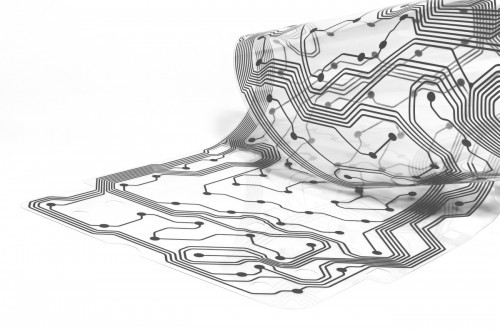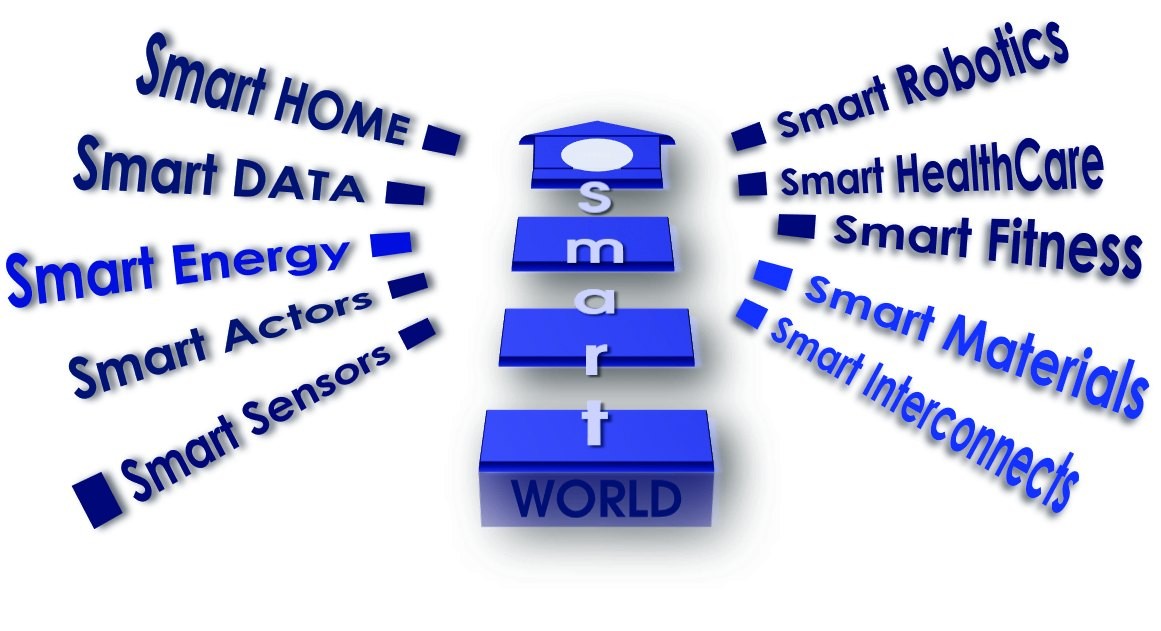From smartphones to smart energy and smart homes - we now live in a completely new world of smart things. The 'smart world' now dominates our daily interactions in the public, social and professional spheres. But what needs to happen for our world to become truly smart?
 We often hear: "I don't really want to be so dependent on social media". But all too often, the smart virtual world is just a click away - and unfortunately, the whole thing has a lot of addictive potential. As is so often the case, it is both a curse and a blessing.
We often hear: "I don't really want to be so dependent on social media". But all too often, the smart virtual world is just a click away - and unfortunately, the whole thing has a lot of addictive potential. As is so often the case, it is both a curse and a blessing.
The fact that social media and IoT are so universally successful and technically functional around the globe is due in no small part to the technology revolution. In 1992, physicists and engineers developed a system that has revolutionized the world alongside many other innovations - a perfect interplay of hardware and software.
What began 30 years ago as an internal and fast communication platform has long since grown and become so powerful and complex that it is already on its way to becoming complicated and limited again. What once began as a simple Internet - without restrictions and commercial overload - has now reached the point where regulation is required.
This would actually be the slow death of a good thing. To prevent this from happening, new hardware and software concepts are being developed to help make the world safer and more trustworthy. I touched on this topic in my first column in PLUS 10/2021: Semiconductor technology and electronics with their assembly and connection technology are key. In other words, hardware with specific features and functions that enable safe use and the integration of systems into systems and are also intended to be climate-neutral.
I don't want to anticipate current developments at this point, but I do want to make reference to them: I like the fact that the expansion of expertise in the fields of microelectronics and microsystems technology is showing a way forward in Europe for the development of electronics for various future fields. For me, this includes above all the development of new concepts for sensor technology and their applications. Smart sensors - an example of system integration.
Behind this are new materials, assembly concepts, connection techniques, the combination of different technologies from the world of semiconductors and organics - heterogeneous system integration. The results can be, for example, completely new so-called quantum sensors. You were able to find out more about this in the previous issue of PLUS.
Both start-ups and technology groups see huge potential in this market. Bosch is hoping for a comprehensive breakthrough of these technologies in 10 years at the latest. Something that lives up to what I would like to call 'Beyond MEMS', so to speak. Bosch has what it takes. And it is a consistent further development of existing MEMS technologies for sensors. For Bosch, the path seems to be becoming increasingly clear. Hybrid technologies will be developed over the next 10 years. Tried and tested components from the MEMS era will certainly also be found in the new sensors with quantum technology. And the trend towards miniaturization will continue. This could be one of the major advantages of the new technology. Smaller and flatter sizes, which have so far been denied to MEMS due to their design and functionality.
 On the way to truly smart technology of the future
On the way to truly smart technology of the future
The challenges for assembly and connection technology are similar to those for the first assembly concepts for electrical-optical couplers at circuit carrier or PCB level. Projects such as EOCB and Futureboards already clearly demonstrated the challenges to be solved around 20 years ago: positioning accuracies of components in the sub-micrometer range. 2 µ were required for optical coupling into the optical component from the glass fiber or then from the optical waveguide in the polymer or glass structure - and this at circuit carrier level.
Speaking of which, companies such as Infineon and Siemens were heavily involved at the time. It is possible that Infineon will jump on the bandwagon again. Quantum sensor technology would also fit well into a new portfolio here. One would hope so, as Infineon is also one of the major investors in Europe.
Interdisciplinarity
One thing is certain: smart electronics requires a complete value chain and interdisciplinarity. Semiconductors alone will not be able to fix it. The world of semiconductor chips and the world of organic circuit carriers must finally be brought together to create a future-oriented assembly and connection technology. The software will also have to be an integral component, e.g. in the form of firmware with a high proportion of AI and the right interfaces for communication - 6G/7G or 'BT9'. Ultimately, all of this can only be achieved by genuine technology companies and groups that operate on the market with a clear and progressive technology strategy. By 'act' I mean proactive and forward-looking technology plans and scenarios as well as concepts and productions in Europe.
Let us look to the future and place our trust in the skills of the passionate engineers who continue to receive an excellent education.
This is where the circle closes. More important than ever is the comprehensive and well-founded training of the next generation of engineers. In my view, interdisciplinarity will play an increasingly important role in the future. From our own training times, we know this as mechatronics or even precision engineering. Here, both technical understanding and the interaction of mechanics, electronics, optics and software are taught. The increasing importance of collaborative development is particularly evident in the fact that all leading design tool manufacturers are now developing or offering 3D design tools for mechanical, electrical/electronic systems.
To return to the in-depth scenario of smart electronics and the SmartWorld: It is precisely this understanding of the application and function as well as the interdisciplinarity mentioned above that is needed here. With this approach and a consistent investment strategy in new technology and know-how, it can succeed. And that is the real 'Smart Technology R-Evolution'.
So it's all about thinking outside the box and we can look forward to what the future holds.
You can also look at it this way.
Kind regards
Jan Kostelnik
www.tebk o.de


